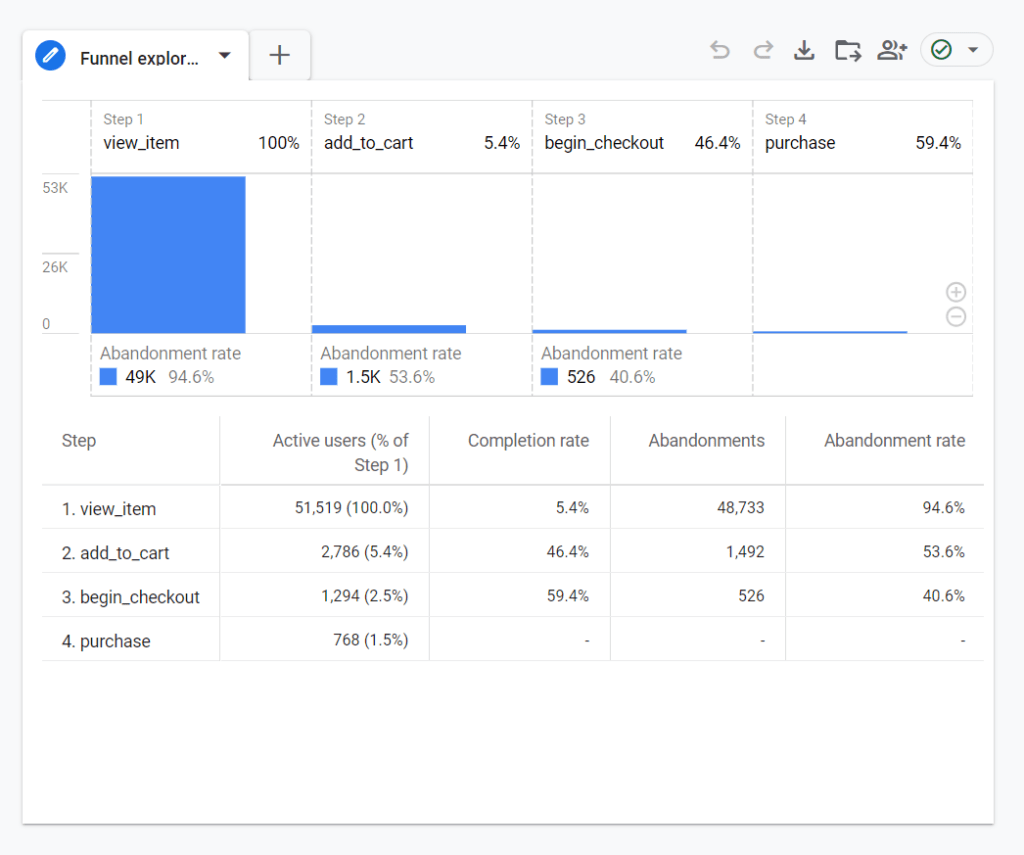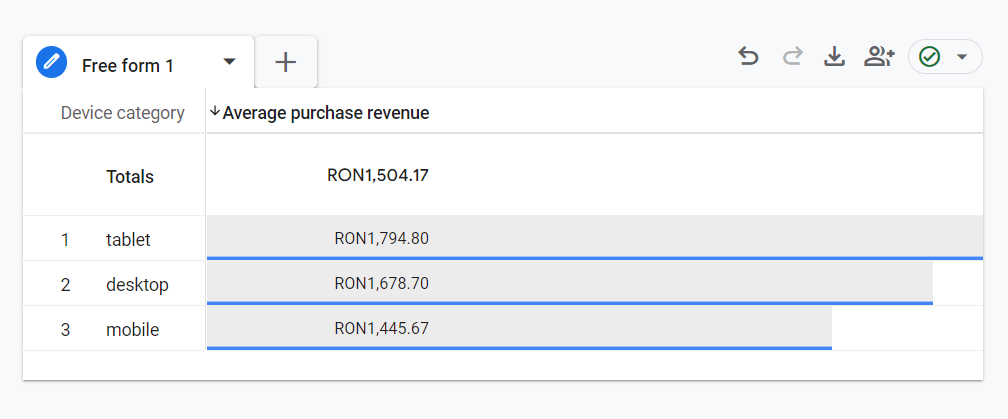Determining what makes an online store successful can be challenging, but understanding what is the best way to measure a company’s eBusiness success is crucial. Without the right metrics, making informed decisions becomes a daunting task, and your growth potential might be stifled. In this comprehensive guide, I will walk you through the most effective ways to measure eBusiness success, providing you with the tools and knowledge to optimize your operations and boost your profitability.

Understanding eBusiness success metrics
What are eBusiness success metrics?
What is the best way to measure a company’s eBusiness success involves understanding the metrics that evaluate the performance, growth, and efficiency of an online business. These metrics encompass various aspects, including website traffic, user behavior, sales, customer engagement, and operational efficiency.
Why are these metrics important?
Tracking eBusiness success metrics is essential for several reasons:
- Informed Decision-Making: Metrics provide concrete data to guide strategic decisions.
- Performance Evaluation: Helps identify areas of strength and weakness.
- Growth Tracking: Measures progress over time and assesses the impact of changes.
- Customer Insight: Offers a deeper understanding of customer behavior and preferences.
Website traffic and user behavior
Unique visitors
Definition and importance: Unique visitors represent the number of individual users who visit your website over a specific period. This metric is crucial as it indicates the reach of your online presence.
How to track: Tools like Google Analytics can provide detailed insights into the number of unique visitors, helping you understand the best way to measure a company’s eBusiness success.
Page views
Definition and importance: Page views refer to the total number of pages viewed by visitors. High page views suggest engaging content and effective navigation.
How to track: Monitor page views in your analytics dashboard. Look for patterns in high-traffic pages to replicate successful strategies.
Session duration
Definition and importance: Session duration measures the average time a user spends on your site. Longer sessions generally indicate higher engagement and interest.
How to track: Use analytics tools to track session duration. Identify pages with high engagement and analyze their content to improve other areas of your site.
Bounce rate
Definition and importance: Bounce rate is the percentage of visitors who leave your site after viewing only one page. A high bounce rate often indicates poor user experience or irrelevant content.
How to track: Track bounce rates for individual pages and overall site performance. Address high bounce rates by improving content relevance and user experience.
Traffic sources
Definition and importance: Traffic sources reveal where your visitors are coming from, such as organic search, paid ads, social media, or direct visits. Understanding traffic sources helps optimize marketing efforts.
How to track: Analytics tools can break down traffic sources, allowing you to focus on the most effective channels and improve underperforming ones.
Conversion metrics
Conversion rate
Definition and importance: Conversion rate is the percentage of visitors who complete a desired action, such as making a purchase or signing up for a newsletter. This metric is a direct indicator of what is the best way to measure a company’s eBusiness success.
How to track: Set up conversion tracking in your analytics tool.
I mostly track and measure the overall conversion rate, mostly the percentage of visitors who make a purchase, and the add to cart conversion rate on product pages, category pages and homepage. You should constantly monitor and optimize conversion funnels to increase this rate.
Cart abandonment rate
Definition and importance: Cart abandonment rate measures the percentage of users who add items to their cart but do not complete the purchase. Reducing this rate can significantly boost sales.
How to track: Use eCommerce analytics tools to track abandoned carts. Implement strategies like remarketing emails and simplified checkout processes to reduce abandonment. I advise you to focus on optimizing the end of funnel (most probably the users who begin the checkout but don’t finish the purchase) and then move upwards from there. Here is a more detailed article about how to track your cart abandonment rate in Google Analytics.

Customer acquisition cost (CAC)
Definition and importance: CAC is the average cost to acquire a new customer. Keeping this cost low while maintaining high-quality acquisitions is key to profitability.
How to track: Calculate CAC by dividing total acquisition costs by the number of new customers. Regularly review and optimize marketing expenditures.
Return on investment (ROI)
Definition and importance: ROI measures the profitability of your investments, particularly in marketing. It’s calculated by dividing the net profit by the total investment cost.
How to track: Track ROI for different campaigns and marketing channels. Focus on high-ROI activities and refine or discontinue low-performing ones.
Sales and revenue metrics
Total revenue
Definition and importance: Total revenue is the income generated from all eBusiness activities. It’s a fundamental measure of overall business performance.
How to track: Regularly monitor revenue through your eCommerce platform and financial software. Identify trends and analyze the impact of different strategies on revenue growth.
Average order value (AOV)
Definition and importance: AOV is the average amount spent per order. Increasing AOV can significantly boost overall revenue without acquiring new customers.
How to track: Calculate AOV by dividing total revenue by the number of orders. Implement upselling and cross-selling strategies to increase this value. Related products, Popular products, Minimum cost for free shipping etc..
If you would want to track what is the average order value for visitors arriving from Facebook and Google Search, you can set up your analytics account to show dimensions like Session Source / Medium and as for the metric you should select Average Purchase Revenue. Comment on this article if you have difficulties with this setup and I’ll show you how to do it.

Customer lifetime value (CLV)
Definition and importance: CLV estimates the total revenue a business can expect from a single customer over their lifetime. It’s crucial for understanding long-term profitability.
How to track: Use historical data to estimate CLV. Enhance customer retention and satisfaction to increase this metric.
Sales growth
Definition and importance: Sales growth measures the rate of increase in sales over a specific period. It’s a key indicator of business expansion and market penetration.
How to track: Track sales on a monthly, quarterly, and yearly basis. Analyze growth patterns and identify factors contributing to increased sales.
Customer metrics
Customer retention rate
Definition and importance: Customer retention rate is the percentage of customers who return for repeat purchases. High retention rates indicate strong customer loyalty and satisfaction.
How to track: Monitor repeat purchase rates and implement loyalty programs to encourage repeat business.
Net promoter score (NPS)
Definition and importance: NPS gauges customer loyalty by asking how likely they are to recommend your business to others. It’s a simple yet powerful metric for customer satisfaction.
How to track: Conduct NPS surveys and analyze the results. Use feedback to improve products and services.
Customer satisfaction (CSAT)
Definition and importance: CSAT measures how satisfied customers are with your products or services. It provides direct feedback on customer experiences.
How to track: Use surveys and feedback forms to gather CSAT data. Address common issues and improve overall satisfaction.
Engagement metrics
Email open and click-through rates
Definition and importance: These metrics measure the effectiveness of your email marketing campaigns. High open and click-through rates indicate engaging content and relevant messaging.
How to track: Use email marketing platforms to monitor these rates. Test different subject lines, content, and calls to action to optimize performance.
Social media engagement
Definition and importance: Social media engagement includes likes, shares, comments, and follower growth. It’s crucial for building brand awareness and community.
How to track: Track engagement metrics across different social media platforms. Focus on content that drives interaction and growth.
Content engagement
Definition and importance: Content engagement measures interactions with your blog posts, videos, and other content. High engagement indicates valuable and relevant content.
How to track: Use analytics tools to monitor content performance. Create content that resonates with your audience to drive engagement.
Operational metrics
Website performance
Definition and importance: Website performance includes page load speed, uptime, and technical errors. A well-performing site provides a better user experience and higher search rankings.
How to track: Use tools like Google PageSpeed Insights and UptimeRobot to monitor performance. Regularly optimize your site to ensure fast load times and minimal downtime.
Order fulfillment
Definition and importance: Order fulfillment efficiency measures how quickly and accurately orders are processed and delivered. Efficient fulfillment leads to higher customer satisfaction.
How to track: Monitor fulfillment times and error rates. Streamline processes and use reliable shipping partners to improve efficiency.
Inventory management
Definition and importance: Inventory management tracks stock levels, turnover rates, and stock-outs. Effective management prevents overstocking and stock-outs, optimizing cash flow.
How to track: Use inventory management software to track stock levels in real-time. Implement just-in-time inventory practices to reduce excess stock.
SEO and search performance
Organic search traffic
Definition and importance: Organic search traffic comes from search engine results. High organic traffic indicates effective SEO strategies.
How to track: Use tools like Google Analytics and Search Console to monitor organic traffic. Optimize content and backlinks to improve search visibility. Hire a proper SEO expert to optimize your website, technology stack and content efficiently. Here are a few useful resources on Search Engine Optimization strategies for you to check.
Keyword rankings
Definition and importance: Keyword rankings show the position of your key search terms in search engine results pages (SERPs). Higher rankings lead to more visibility and traffic.
How to track: Track keyword rankings with tools like SEMrush and Ahrefs. Continuously optimize your content and SEO strategies to maintain and improve rankings. For more tools you should check out my article about the essential SEO tools you should be using.
Backlink profile
Definition and importance: A backlink profile includes the quality and quantity of backlinks to your website. High-quality backlinks improve search engine authority and traffic.
How to track: Use SEO tools to monitor your backlink profile. Focus on building high-quality backlinks from reputable sites.
Financial metrics
Profit margins
Definition and importance: Profit margins measure the profitability of your business. High margins indicate efficient operations and pricing strategies.
How to track: Calculate gross and net profit margins regularly. Optimize costs and pricing to maintain healthy margins.
Operating costs
Definition and importance: Operating costs are the expenses involved in running your eBusiness. Keeping these costs low is crucial for profitability.
How to track: Monitor all operating costs and identify areas for reduction. Streamline operations to minimize expenses.
Cash flow
Definition and importance: Cash flow tracks the inflows and outflows of cash. Positive cash flow ensures your business can cover expenses and invest in growth.
How to track: Use financial software to monitor cash flow. Implement strategies to improve cash flow management, such as faster invoicing and payment collection.
Tools to measure eBusiness success
Google analytics
Overview: A comprehensive web analytics tool that tracks website traffic and user behavior.
Features: Detailed reports on audience, acquisition, behavior, and conversions.
How to use: Set up Google Analytics on your site to track key metrics and gain insights into user behavior.
SEMrush / Ahrefs
Overview: Powerful SEO tools for tracking keyword rankings, backlinks, and competitive analysis.
Features: Comprehensive reports on search performance, keyword research, and site audits.
How to use: Use these tools to monitor and improve your SEO strategies, track competitors, and optimize content.
HubSpot / Salesforce
Overview: CRM tools for managing customer interactions and sales processes.
Features: Detailed insights into customer data, sales pipelines, and marketing performance.
How to use: Integrate these tools into your business to streamline customer management and improve sales efficiency.
Mailchimp / Constant contact
Overview: Email marketing platforms for creating and tracking email campaigns.
Features: Email templates, automation, analytics, and segmentation.
How to use: Use these platforms to design engaging emails, automate campaigns, and track performance metrics.
Hotjar
Overview: A tool for understanding user behavior through heatmaps and session recordings.
Features: Visual insights into how users interact with your site.
How to Use: Implement Hotjar to identify areas for improvement in user experience and website design.
Conclusion
Measuring a company’s eBusiness success requires a holistic approach that encompasses various metrics and KPIs. By regularly monitoring these metrics, you can identify strengths and weaknesses, optimize your strategies, and ultimately drive growth and profitability in your online operations. Remember, continuous improvement and adaptation are key to staying ahead in the competitive eCommerce landscape.
Measuring the benchmarks and determining which one is more relevant to you mainly depends on your business model. Follow the rabbit to find out more about What are the four main types of E-Business Models?
Sharing is caring
I invite you to share your experiences and strategies for measuring eBusiness success in the comments below. Your insights can help other eCommerce business owners navigate their journeys more effectively. If you have any questions or need further assistance, feel free to reach out. Let’s work together to achieve eBusiness excellence!
I encourage you to check out my eBusiness category for more articles related to this.



2 comments on “What is the best way to measure a company’s eBusiness success?”